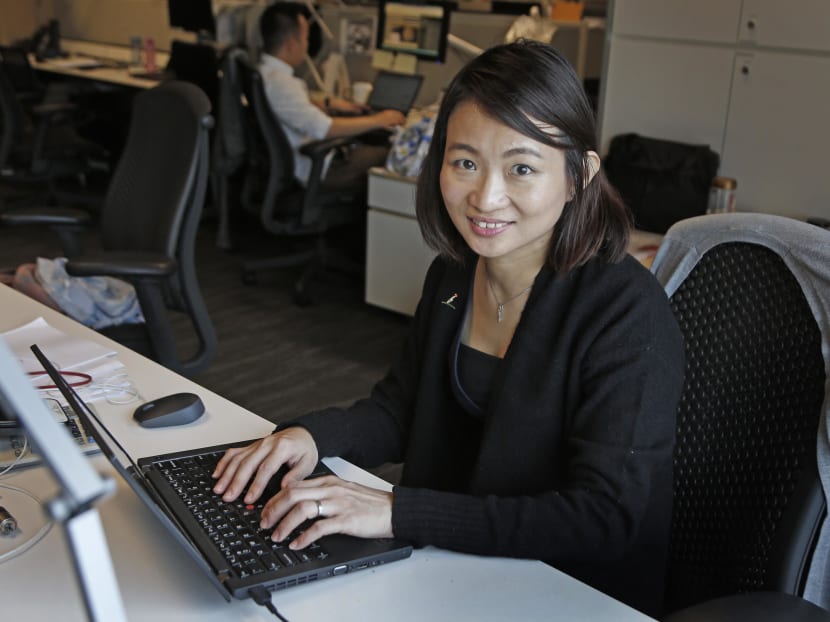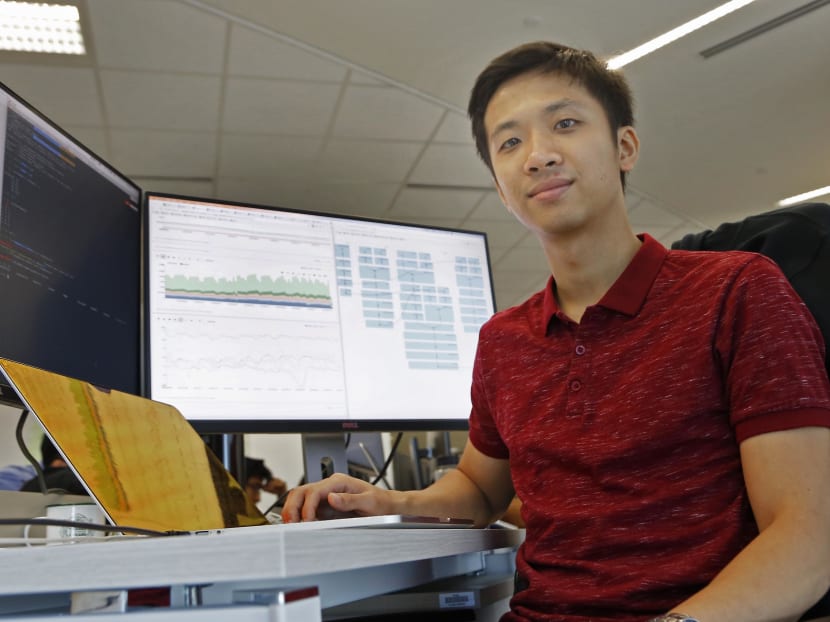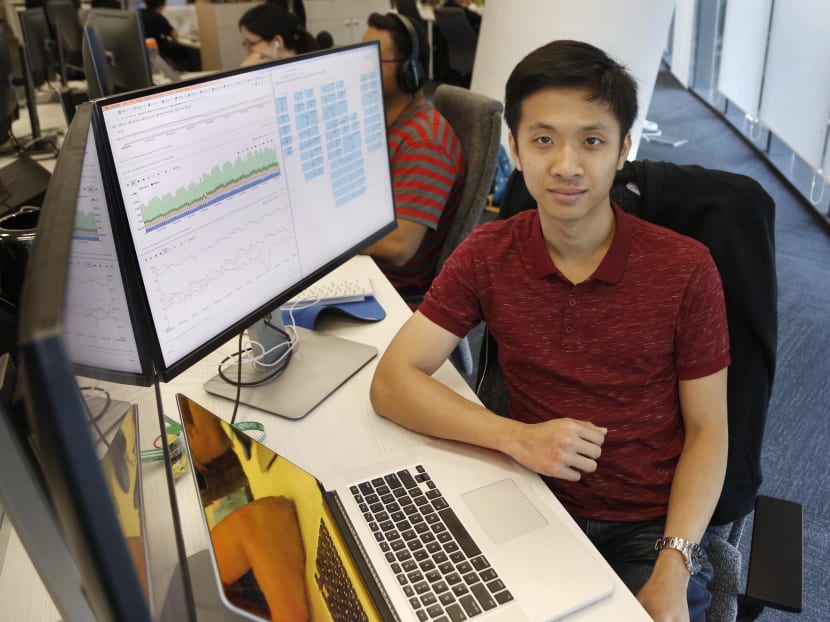The Future of Work: The minds and data powering your shopping, ride-hailing activities
In a new weekly series, TODAY looks at The Future of Work — the emerging jobs fuelled by technological advancements which may not even have existed a few years back, but are set to proliferate within the next decade or so. In the fifth instalment, we feature the growing pool of data scientists who are mining multiple streams of data to shape consumer behaviour.
Late last year, a study by consulting firm McKinsey estimated that almost a quarter of work activities in Singapore could be displaced by 2030. At the same time, however, a vast amount of jobs will be created, with new technologies spawning many more jobs than they destroyed, the study pointed out. The introduction of the personal computer, for example, has enabled the creation of 15.8 million net new jobs in the United States in the last few decades, even after accounting for jobs displaced.
In a new weekly series, TODAY looks at The Future of Work — the emerging jobs fuelled by technological advancements which may not even have existed a few years back, but are set to proliferate within the next decade or so. In the fifth instalment, we feature the growing pool of data scientists who are mining multiple streams of data to shape consumer behaviour.
SINGAPORE — These days, shopaholics and non-shopaholics alike will find themselves bombarded by marketing and promotional campaigns touting bundle offers and discounts, be it on their smartphone applications and email, or via their sensory system as they walk along rows of shops in a mall.
While one may or may not pay attention to the information, a great deal of science is involved in sizing up the target audience for these campaigns and promotions — to try and increase the effectiveness of these messages.
Data is increasingly being used to slice and dice the various groups of shoppers, to better push out deals and marketing efforts to consumers.
At real-estate giant CapitaLand’s malls, for instance, data drives its publicity work.
In August last year, it rolled out a retail shopper analytics dashboard to its mall managers, marketing staff members and management.
The dashboard brings together data from more than 880,000 members who have subscribed to its CapitaStar rewards programme in Singapore, giving up-to-date insights into its customers’ profiles from their age groups to their spending patterns and where they shopped, for instance.
A nine-member team led by Dr Neo Poh Har, 40, is behind the group’s efforts to transit to “big-data analytics”.
To analyse consumer patterns, Dr Neo, CapitaLand’s assistant vice-president for data and insights, said that one of the models used is what is termed the “market basket analysis”, to determine “affinity” across its tenants.
Based on an analysis of the genders and age groups of customers, it plots the connections across the merchants that various groups of customers patronise. This allows retailers to potentially work together on bundle deals for customers.
Taken into account, too, are family segments such as families with children, as well as young and mature couples.
“Some merchants are highly tied with families, for instance. So their affinities across different merchants would be very different from (those that are tied to) young couples,” Dr Neo said.
This means that there could be a plan to let a group of shoppers hit a certain minimum spending at a family store and be entitled to a deal at a family-oriented restaurant.
INFLUENCING CONSUMER BEHAVIOUR
Apart from helping merchants bridge gaps, curate and improve their product mix to meet demand, and grow their business, data also has the potential to be used to influence consumer behaviour.
By analysing customers’ preferences and habits, and the links between the products and services they buy, CapitaLand may recommend “more meaningful and new products to similar personas, allowing our customers to discover new retail experiences at our malls”, Dr Neo said.
CapitaLand’s work with data is not confined just to retail. It covers various areas such as predicting employee attrition months ahead, assisting its internal auditors in detecting anomalies in business processes, and helping managers at its serviced residences to gain insights into their guests and whether they are reaching revenue and occupancy targets.

At Ascott, for instance, bookings for serviced apartments can be tracked months in advance and forecasts made on whether targets are likely to be met.
If forecasts show that their properties may not hit the targets, residence managers will work with their sales and marketing teams to roll out campaigns and promotions to raise occupancy.
These efforts have also progressively obviated the need for its operations crew to spend more than an hour each day churning out reports.
The company is in the process of quantifying the benefits of its data-driven approaches, though its efforts have definitely increased merchant sales, Dr Neo noted.
NAILING PROBLEM AREAS
At ride-hailing company Grab, senior data scientist Tan Sien Yi, 26, has been kept busy deciphering how to make it easier for commuters and drivers to find one another at pick-up locations.
This issue has been raised through feedback and it is prevalent, for instance, at large buildings with multiple entrances.
Dealing with vast amounts of data — four million rides take place through Grab in the region daily — Mr Tan and his colleagues have to combine information culled from many avenues, such as ride data and customer and driver feedback, to nail down the problem areas and suggest the correct location points automatically.

“What the data part does is to narrow it down, because humans can’t go around to every building,” he said.
With the insights gleaned from the data, Grab set out to include different pick-up points for particular locations.
The company has so far added more than 1,200 pick-up points across more than 600 locations in Singapore, such as Changi Airport and malls. “This number is increasing rapidly and we are adding more entrances every day,” Grab said.
Coming up with better waiting-time predictions is another ongoing task for Mr Tan’s co-workers. This is done through a process of combining historical data on traffic conditions with real-time traffic data.
“When you tell a passenger that (his ride) is going to (arrive in) these many minutes, that’s almost like a promise you make. As a company, you really want to try to keep that promise and the focus of our work is on how we can promise our passengers better (predictions),” Mr Tan said.
WEEDING OUT RISK OF BIAS
Asked how he guards against starting out with a fixed outcome in mind, Mr Tan said that this was “definitely a danger” and data scientists need to approach data carefully and responsibly.
To do this, he frames the right question in his mind before he begins work. “So instead of asking, ‘How would this data show that my new feature is better?’, I would ask, ‘What data would I need to show the effect this new feature is having on users? What else would I need to be more certain of this effect?’,” he said.

“It's a subtle difference, but it helps me move from desiring an outcome that is self-interested to one that is truthful,” he explained.
As with any other research field, data scientists do not always get the results they hope for, Mr Tan said. “And that is okay. It's better to fail fast, take a step back, and try a different angle to reach a decision which you can confidently say was right given the data we have,” he added.
CapitaLand’s Dr Neo said: “To understand the correlations and obtain insights from data, one needs to take a comprehensive approach, be open to new hypotheses and also understand how to measure the relevant outcomes.”
‘JUST SKIMMING THE SURFACE’
Dr Neo and Mr Tan believe that the possibilities of applying data science to improve processes and user experience are vast.
Mr Tan said that his team had “only just skimmed the surface” in using data science to serve Grab's customers in the region better.
It can be applied, for instance, to further optimise Grab’s food delivery processes, better predict supply and demand for transport, and improve how users interact with its app.
An interesting project Dr Neo would like to do is “real-time marketing”, which would involve engaging shoppers in real time and recommending suitable products to them based on real-time information. “This will create a better customer experience, which will likely lead to increased sales and loyalty.”
EXPANDING POOL OF DATA SCIENTISTS
Presently, Dr Neo’s team at CapitaLand includes three data scientists who all have master’s degrees in data analytics, and strong mathematical and statistical backgrounds.
The team has more than doubled from about four members in the first half of last year to nine now, because of “a lot more interest” in the business to understand how data can benefit the organisation.
For Grab, the company is looking to enlarge its data science capabilities. It expects to expand its 40-strong team by more than half come year’s end.
Qualifications aside, Mr Tan said that data scientists need patience because, as in any research role, they have to experiment with many things and will hit “lots of dead ends”.
Dr Neo also said that the key for aspiring data scientists is patience, because the tendency is to want to go “very advanced” in modelling, but ultimately, businesses must be able to adopt these data applications.
The role of data scientists is to make it “simple, realistic and practical”, she added. “Data scientists would like to go very deep (into) things like deep learning, but we have to progress slowly.”









